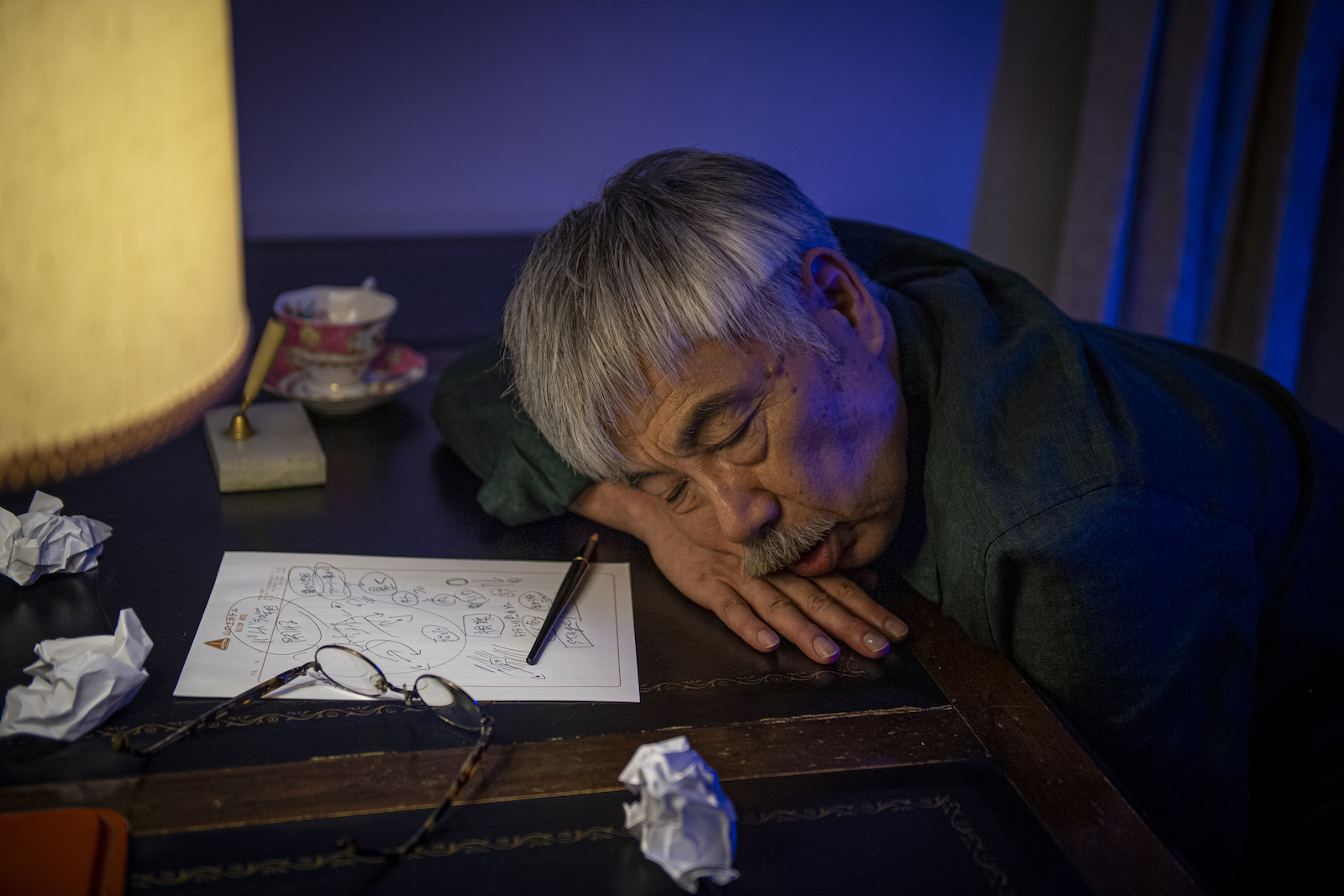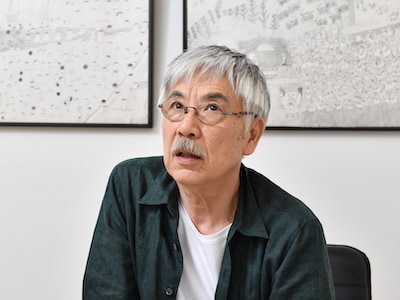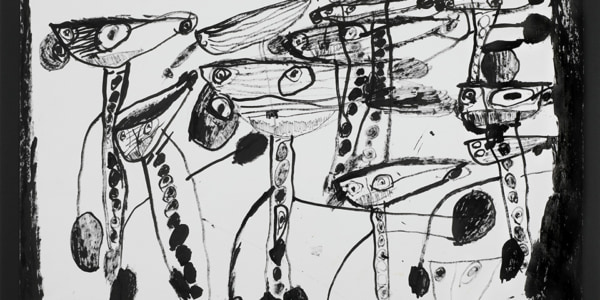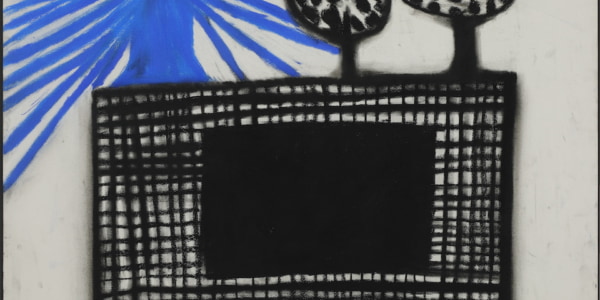Co-starring
HIRANO Shinji (1975-)
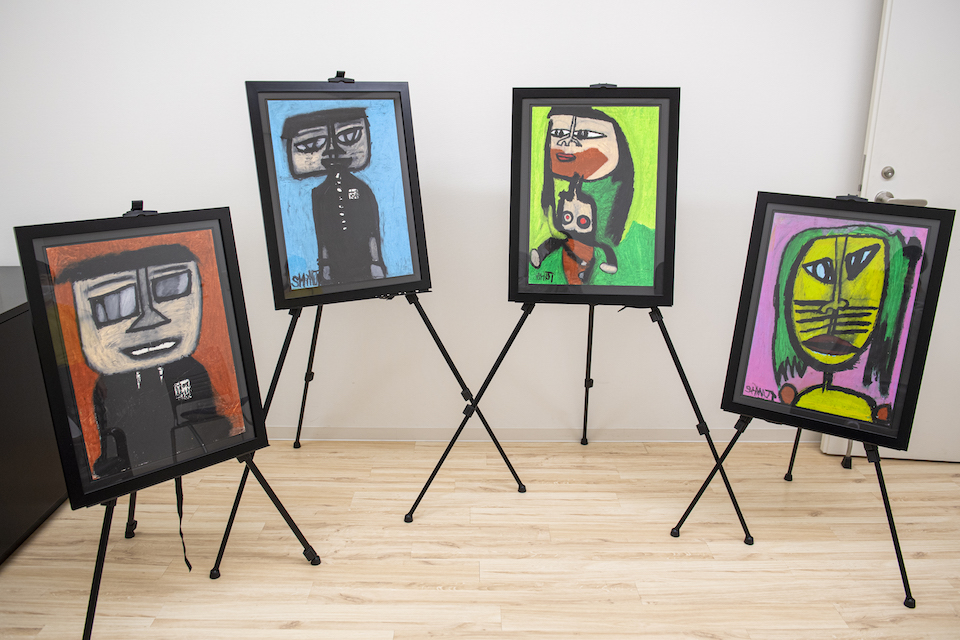
This is a simple yet thought-provoking story.
A man and a woman got married. Although they were still students. They’re the ones in the center two pictures. They quickly had a child, had a happy marriage, and built a home.
20 years passed, however, and the two came to look like the outer drawings. The husband engaged in domestic violence, and the wife, suspecting her husband of infidelity, became distrustful of him. There wasn’t a single good thing about their marriage.
I wonder how…
How did that happy couple end up like this after 20 years?
20 years of time passing and of things accumulating.
Just what does that mean, and just how does time pass? That’s something which many educational scholars think needs to be taught in school, but they don’t know how it should be taught. That is one of the most important subjects of education today. These works express how that subject is simply too big, and that no one has yet come forward with an idea of how to do it. These pictures.
Because I mean, no one gets married thinking they’ll commit domestic violence. Even the guy drawn in these pictures of course hasn’t forgotten that once they were happy. But now they’ve ended up like this. Suspecting everything and trusting no one.
How can we teach about the passage of time in the classroom?
One day, a scholar, searching through various materials, found these four drawings. These drawings were created by an innocent mind. Feeling, however, that these truly depicted the concept of time, something which he had to teach to his students, he decided to use them as materials in his high school ethics class.
Time doesn’t stop. It just keeps moving and moving. The school decided to create a class to grasp the passage of time itself. First period every Monday was for ethics, but that was a problem because it was held at the start of the week when everyone was still sleepy. And even the teacher didn’t fully grasp the passage of time, so of course nor did the students, and ultimately it didn’t work well.
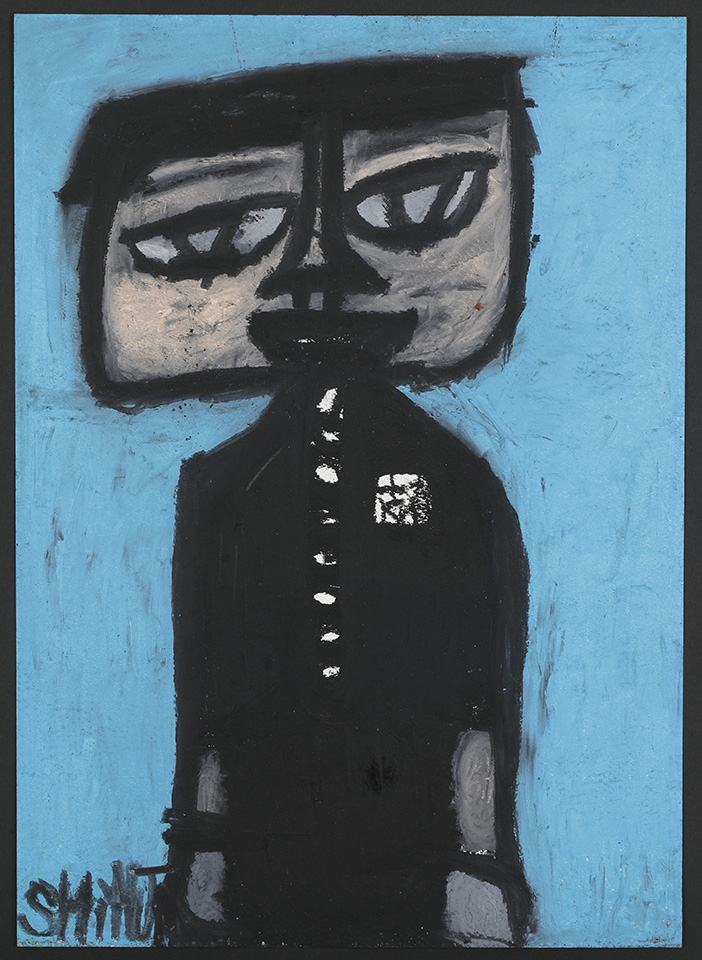
“SHIMURA Ken (as a Child Actor)” / 545×390mm / Oil pastels, etc. on paper / 2006 / Collection of The Nippon Foundation
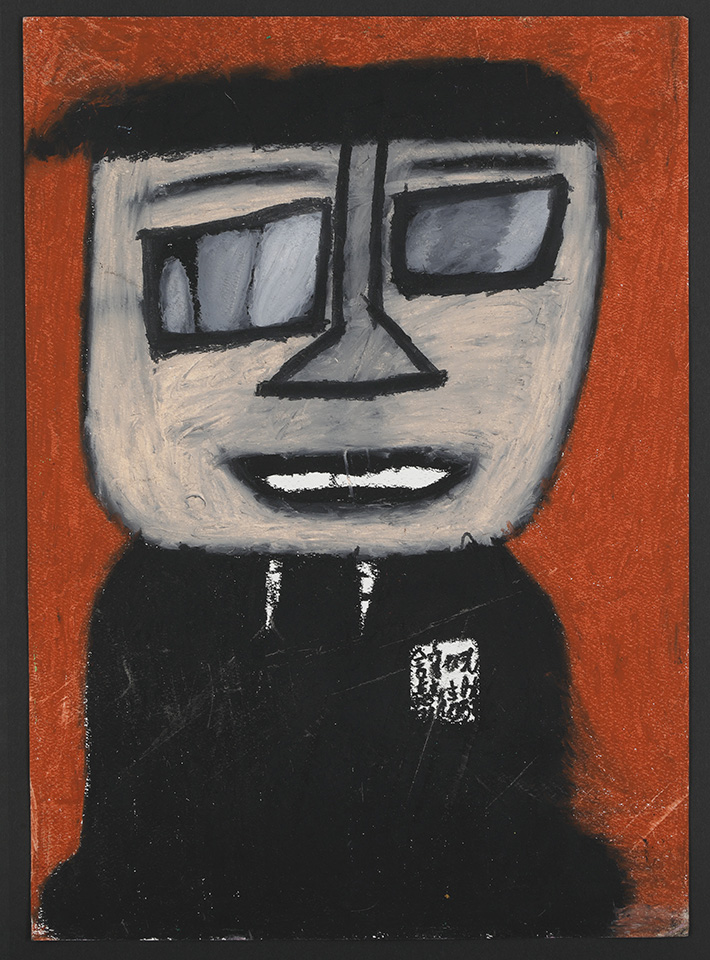
“TACHI Hiroshi” / 545×390mm / Oil pastels, etc. on paper / 2006 / Collection of The Nippon Foundation
These pictures depict the husband 20 years before and 20 years after.
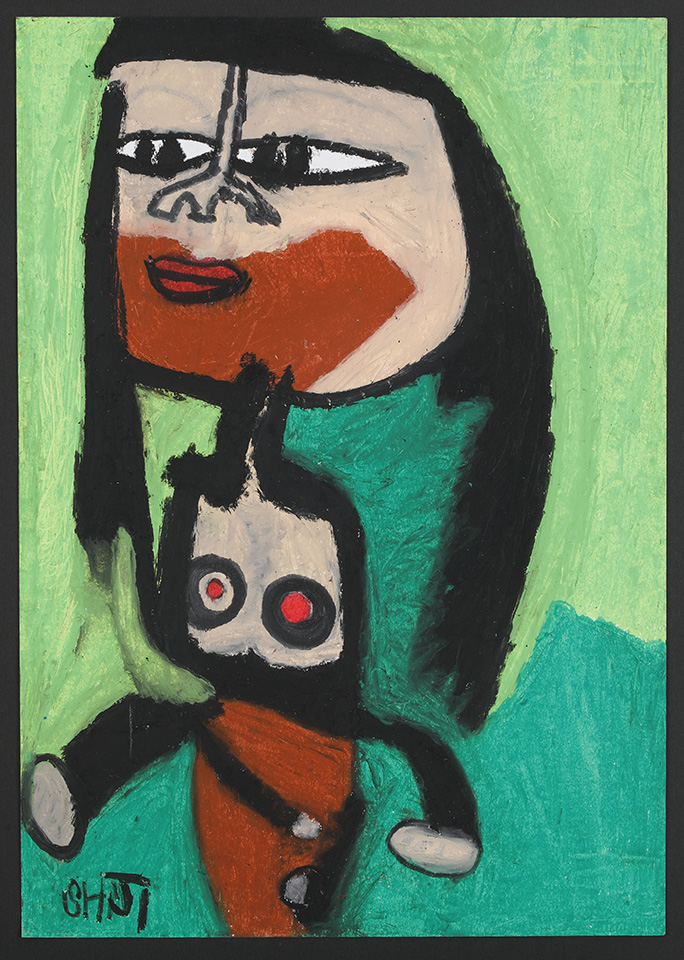
“Mona Lisa” / 545×390mm / Oil pastels, etc. on paper / 2006 / Collection of The Nippon Foundation

“Lion” / 545×390mm / Oil pastels, etc. on paper / 2006 / Collection of The Nippon Foundation
And this is his wife 20 years before and 20 years after.
Some will say “they were like that from the start” and others will say “no, he was an honest guy, but society broke him down.”
Both the stories of the departure of the students for the front in “National Fortune-Telling” and the Windowpane Scratchers in “20th Century Scratcher” deal with the passage of time, how things became the way they are after time passed. These pictures are akin to the culmination of that idea. It tackles the question of why things became the way they have become with the passage of time.
Yes, even the concept of “now” never really seems to click.
That being the case, thinking about whether these pictures would make anyone happy, I guess they wouldn’t. But they reveal the truth.
The educational scholar realized that because we cannot immediately understand the “now,” a certain amount of time needs to pass first. So he decided to hang the drawings of the pair from 20 years ago and 20 years after side-by-side and look at them every day. As he looked at them over and over and over again, he realized he was gradually coming to understand how the two ended up like they did.
The understanding he gained from spending a lot of time looking at the drawings wasn’t so much “this is what happens when time passes;” rather, the impact of the drawings was more like something which built up in the viewer – “ah, so that’s what it’s like.” And through the paintings, he came to realize he could voluntarily think about the passage of time, as well, something for which he had had few opportunities to do before.
In other words, time was necessary in order to understand time. The subject of time is one that cannot be taken in without spending a certain amount of time on it. This is where “Time II” comes in.
As an understanding of time builds up within oneself, if by some chance you raise your hand in violence, you might remember these drawings and, realizing “I’m becoming like those drawings,” put your hand back down again.
Bearing in mind this possibility as well, the educational scholar came to believe that the only thing to do was to engage in this “Time II.” That it was necessary to spend time being exposed to these drawings. Almost like a “Time X-ray.”
X-rays use radiation to make objects visible, revealing what’s inside. In the same way, spending a fixed amount of time being exposed to these drawings also reveals something.
Normally, 20 actual years would have to pass before you could know what will happen. You might not even understand before 50 years had passed. But by the point you understood, you could never change what had taken place by that time.
By looking at the 20 years compressed within these drawings, you might be able to gain this understanding after only a year. Then you might still be able to change where you’re going. You might be able to take the remaining 19 years in a better direction.
Accordingly, the drawings weren’t used for school classes, but, desiring to preserve them, the four images continue to decorate the area around the shoe cupboards of a school somewhere.
Issey Ogata’s Wildly Imaginative Art Appreciation Techniques
As actor, playwright, and director of his one-man show, Issey Ogata brings new worlds to life every day. We asked him for tips on having fun with the power of unfettered imagination.
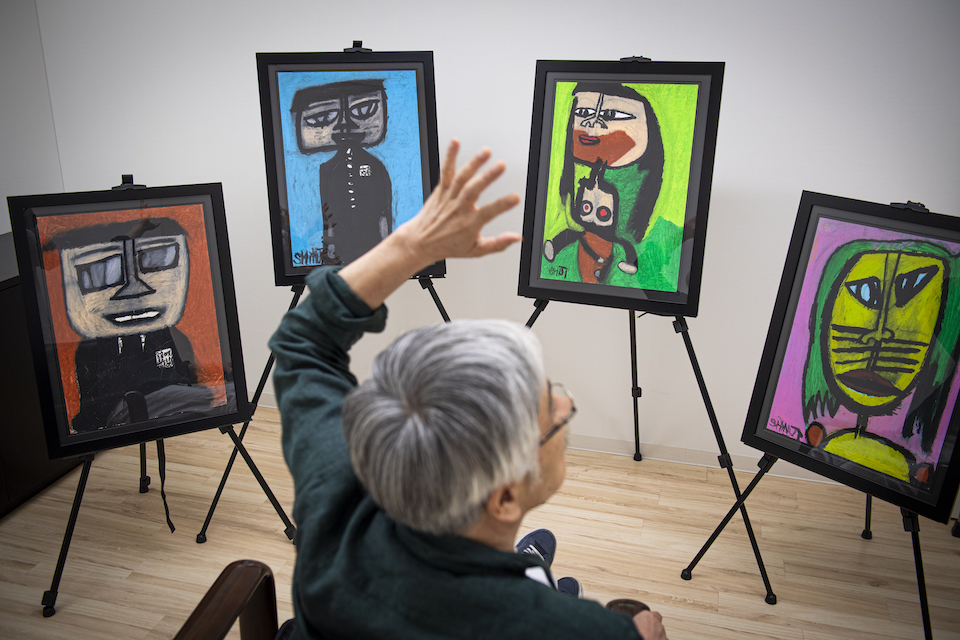
After much time spent pondering, I arrived at the question of just what time is
The starting point for today’s wild imaginings was the sudden change which occurred in the four drawings.
“You’ve changed” is something that could be said about anyone. Or sometimes you hear “you haven’t changed a bit.”
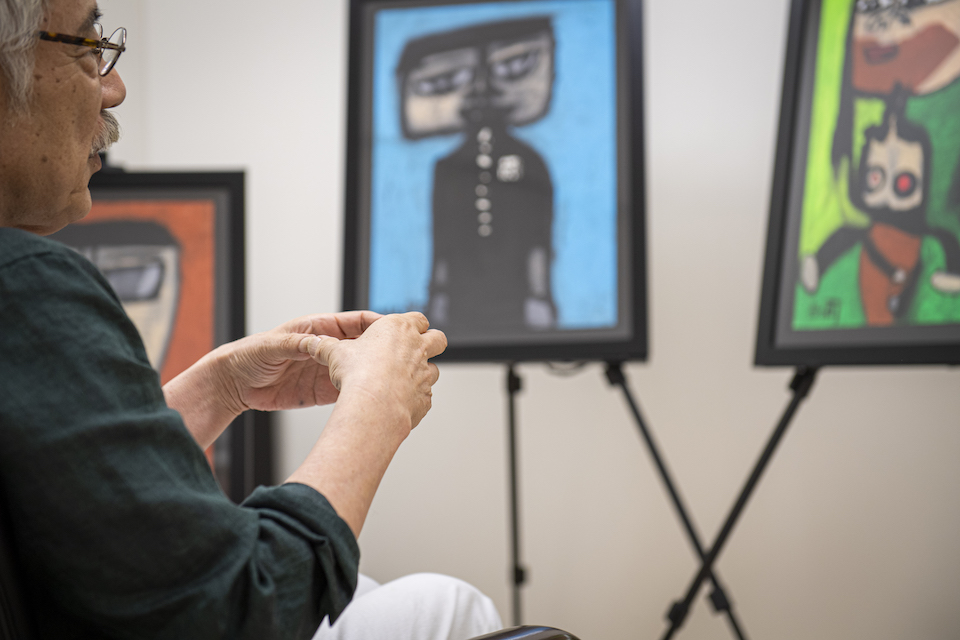
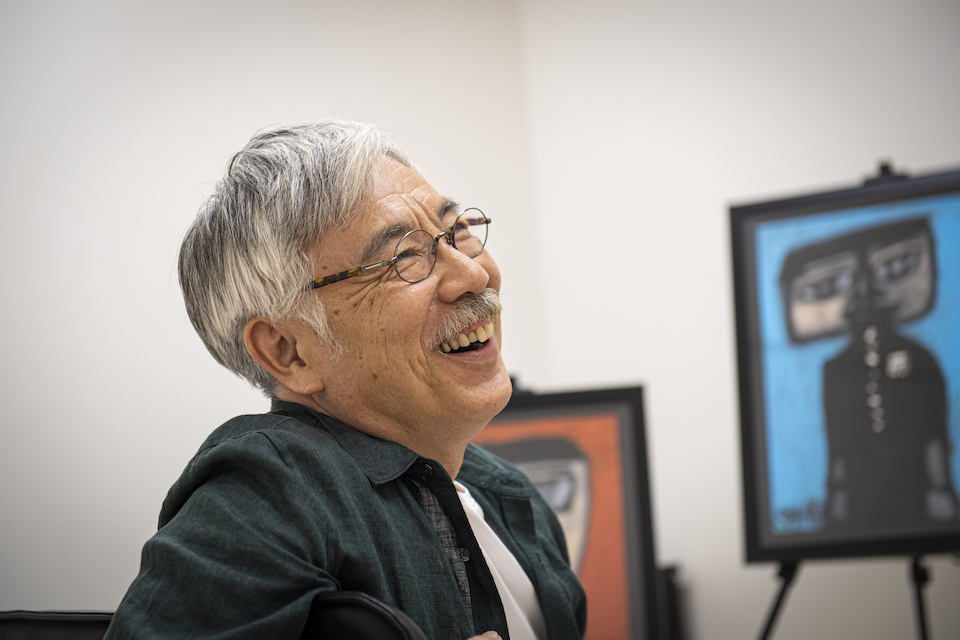
These works of art, preaching neither right nor wrong but simply presenting things as they are, inspired me to think about the essence of things because I’m starving for such questions.
But if you’re going to change no matter what, it’s better to become a beautiful person rather than someone who is suspicious of everything. Your eyes should also be clear and certain. And when I think that, I also feel it is necessary to re-ask why what people do is labeled good or evil in the first place.
What is good, and what is evil?
Most people just do as they are told, like with the departure of the students for the front. Human beings are obedient and will do ABC when they are told to do ABC, and XYZ when they are told to do XYZ. And when the end result is something like the pair in these drawings, you wonder what is the past, and what is good and evil.
Perhaps the reason why I thought about time this time was because I had so much time due to COVID-19. With no work due to COVID-19, I spent a lot of time gazing at these pictures. Because the world was conceptually occupied by COVID-19, I was starving for the metaphysical, for questions about the essence of things.
Even when engaging in wild imaginings, in a world whose very nature is undergoing such a drastic change, I imagine I am drawn to the extreme, and when the world is in a serious situation, I wonder just what a serious situation truly is. Perhaps I have such thoughts out of a desire to more properly deal with the seriousness of the situation.
The works over which I engaged in wild imaginings this time say nothing about how you should do this or that. That’s what I like about all of them. They don’t preach. There is no right or wrong. They just present things as they are.
The reason why I asked so many questions this time seemingly aimed at you, the reader, was likely because I myself desire to be asked such questions. Under COVID-19, I don’t know what I want to or should do. Accordingly, perhaps I was searching for how I would answer if asked these questions, search for something to reach out to.
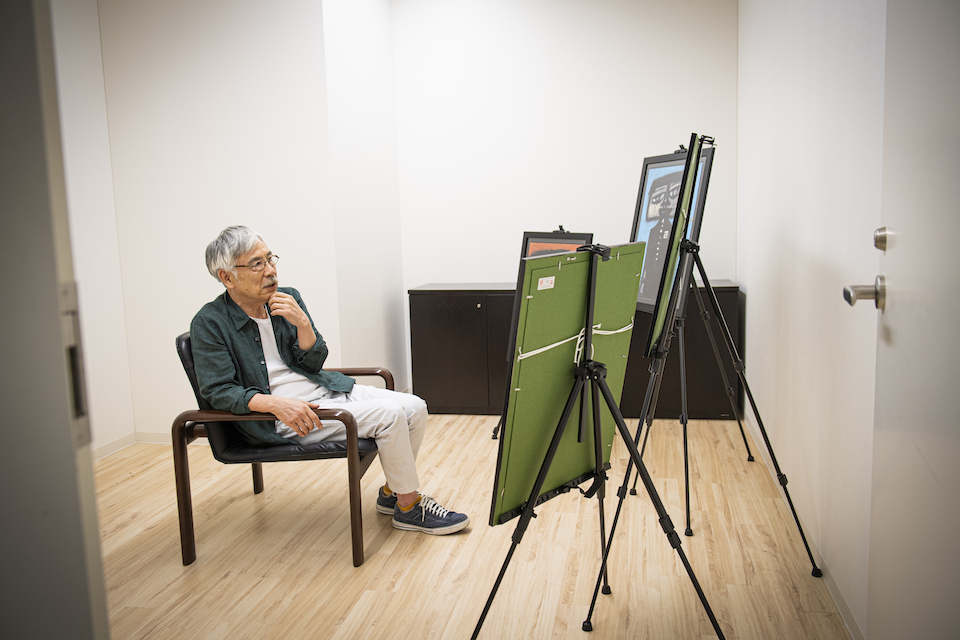
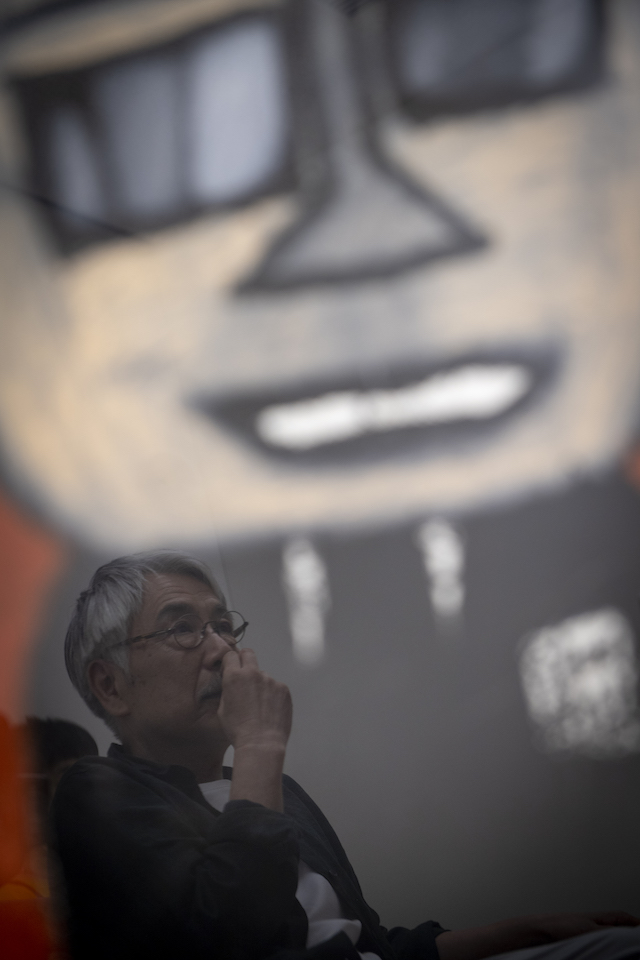
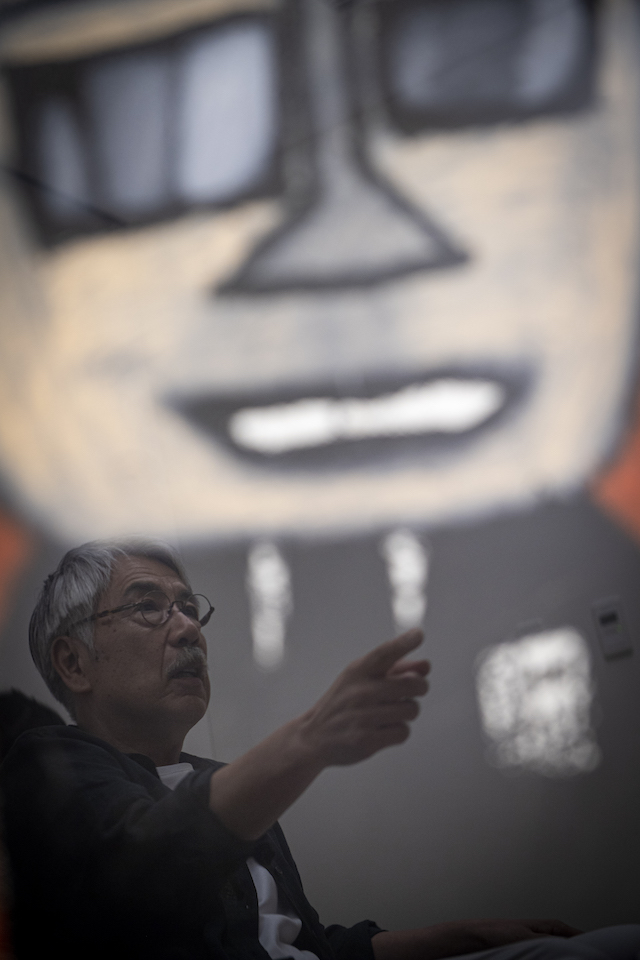
[Corporation] HILLTOP HOTEL




